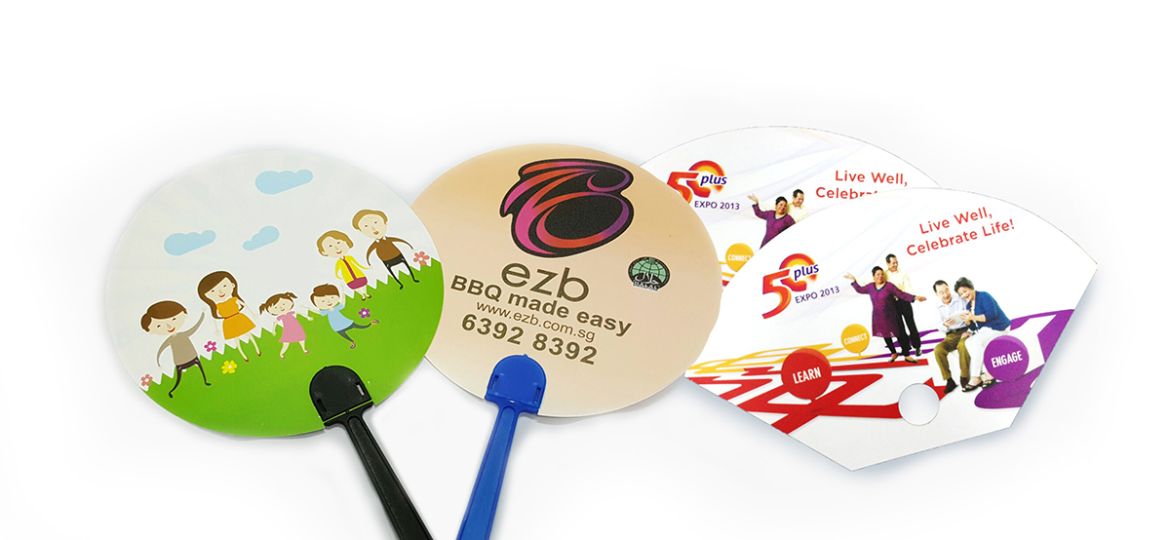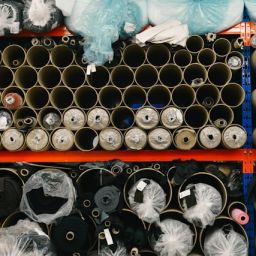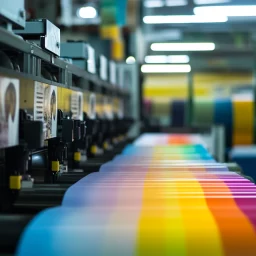
In today’s business world, sustainability is more than just a buzzword—it’s a responsibility. As companies strive to reduce their environmental footprint, one area that often gets overlooked is corporate printing. Traditional printing practices can be incredibly wasteful and harmful to the environment. Fortunately, sustainable corporate printing offers a way to minimize this impact while still meeting business needs. In this blog post, we’ll explore the environmental impact of traditional printing, the benefits of sustainable practices, and strategies for implementing sustainable printing in your business. We’ll also take a look at some innovative technologies that are making sustainable printing easier than ever.
Environmental Impact of Traditional Printing
Traditional printing methods have a significant environmental impact, and understanding this is crucial for making more sustainable choices.
Paper waste
One of the biggest issues with traditional printing is paper waste. The average office worker in the U.S. uses approximately 10,000 sheets of paper each year. Much of this paper ends up in the trash, contributing to deforestation and the overfilling of landfills. The paper industry is responsible for about 14% of global deforestation, and while recycling can help, it’s not a complete solution—only about 64% of paper is recycled.
Energy consumption
The printing process consumes a significant amount of energy, especially when using older, inefficient printers. Producing paper, ink, and toner also requires energy, and most of this energy comes from non-renewable sources. In fact, the paper industry is the fifth-largest consumer of energy worldwide.
Chemical use
Traditional printing relies heavily on chemicals, including inks and toners made from volatile organic compounds (VOCs). These substances contribute to air pollution and can be harmful to human health. Additionally, the disposal of these chemicals can lead to soil and water contamination.
Carbon footprint
The carbon footprint of printing is another major concern. From the production of paper and ink to the energy used in the printing process, the carbon emissions add up quickly. It’s estimated that the carbon footprint of printing one ton of paper is around 6.1 metric tons of CO2.

Benefits of Sustainable Printing
Shifting to sustainable printing practices offers numerous benefits for both the environment and businesses.
Reduced environmental impact
The most obvious benefit of sustainable printing is the reduction in environmental impact. By using less paper, energy, and chemicals, companies can significantly decrease their carbon footprint and contribute to the conservation of natural resources.
Cost savings
Sustainable printing can also lead to cost savings. Reducing paper waste, for example, can lower the costs associated with purchasing and disposing of paper. Energy-efficient printers and recycled materials can also reduce operational costs over time.
Improved corporate image
In today’s market, consumers and clients are increasingly valuing sustainability. Adopting sustainable printing practices can improve your company’s reputation and make it more attractive to environmentally conscious customers and partners.
Compliance with regulations
As governments implement stricter environmental regulations, sustainable printing can help businesses stay compliant. This not only avoids potential fines but also demonstrates a commitment to environmental responsibility.

Strategies for Sustainable Corporate Printing
Implementing sustainable printing practices in your business doesn’t have to be difficult. Here are some strategies to get started:
Use recycled paper
One of the simplest steps you can take is to use recycled paper. Look for paper that is certified by the Forest Stewardship Council (FSC) or made from post-consumer waste. While recycled paper may cost slightly more, the environmental benefits outweigh the cost difference.
Implement print management software
Print management software can help you monitor and control printing activities within your organization. This software can reduce unnecessary printing, enforce double-sided printing, and set quotas for individual users. These features can lead to significant reductions in paper and ink usage.
Choose energy-efficient printers
When it’s time to replace your printers, opt for energy-efficient models. Look for printers with the ENERGY STAR label, which indicates they meet specific energy-saving criteria. These printers consume less energy and often have features like automatic sleep mode to save power when not in use.
Encourage digital alternatives
Promote the use of digital documents instead of printed ones. Encourage employees to share files electronically, use digital signatures, and store documents in the cloud. This not only reduces paper use but also improves efficiency and accessibility.
Recycle ink and toner cartridges
Many ink and toner cartridges are recyclable, and some manufacturers offer recycling programs. Encourage employees to recycle cartridges instead of throwing them away. Some programs even offer discounts on new cartridges when you return used ones.
Educate employees
Sustainable printing starts with awareness. Educate your employees about the environmental impact of printing and the steps they can take to reduce waste. Regular reminders and clear guidelines can help maintain a culture of sustainability within your organization.

Innovative Technologies for Sustainable Printing
Technology is playing a significant role in making sustainable printing more accessible. Here are some innovations that are driving the future of eco-friendly printing:
Waterless printing
Waterless printing is an offset printing technology that eliminates the need for water in the printing process. Traditional offset printing uses water to remove excess ink from non-image areas, which can lead to water pollution and increased energy use. Waterless printing not only reduces water consumption but also produces higher-quality prints and reduces VOC emissions.
Eco-friendly inks
New types of eco-friendly inks are being developed to reduce the environmental impact of printing. These inks are made from renewable resources such as soy, vegetable oils, and even algae. They contain fewer VOCs than traditional petroleum-based inks and are easier to recycle.
3D printing with sustainable materials
While 3D printing is still an emerging technology, it has the potential to revolutionize the printing industry. Researchers are developing sustainable materials for 3D printing, such as biodegradable plastics and recycled materials. This technology could reduce waste and energy consumption in manufacturing.
Cloud printing solutions
Cloud printing solutions allow users to print from any device without needing a physical connection to a printer. This reduces the need for multiple printers in an office and allows for more efficient use of printing resources. It also enables better print management and reduces unnecessary printing.
Final Thoughts
Sustainable corporate printing is an essential part of any company’s sustainability strategy. By reducing paper waste, energy consumption, and chemical use, businesses can minimize their environmental impact while also saving money and improving their corporate image. With the right strategies and innovative technologies, sustainable corporate printing is not only possible but also practical for companies of all sizes.
For more insights on corporate gifting strategies and to explore a wide range of customizable options, visit Diverse Solutions.
















